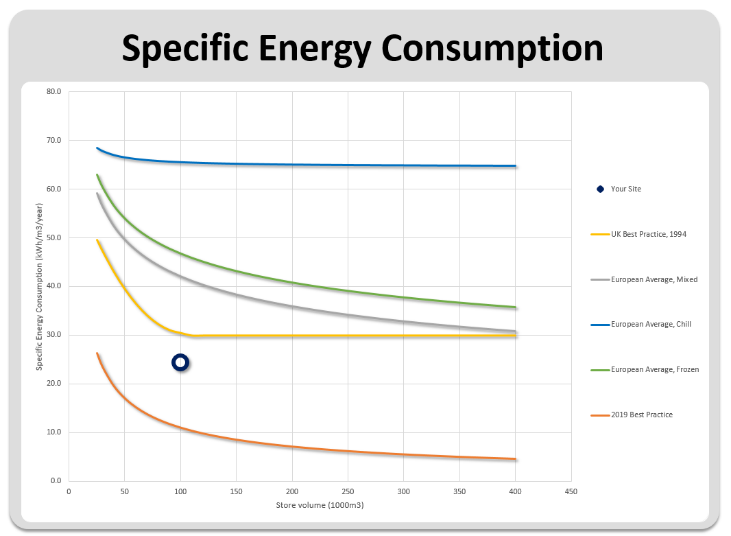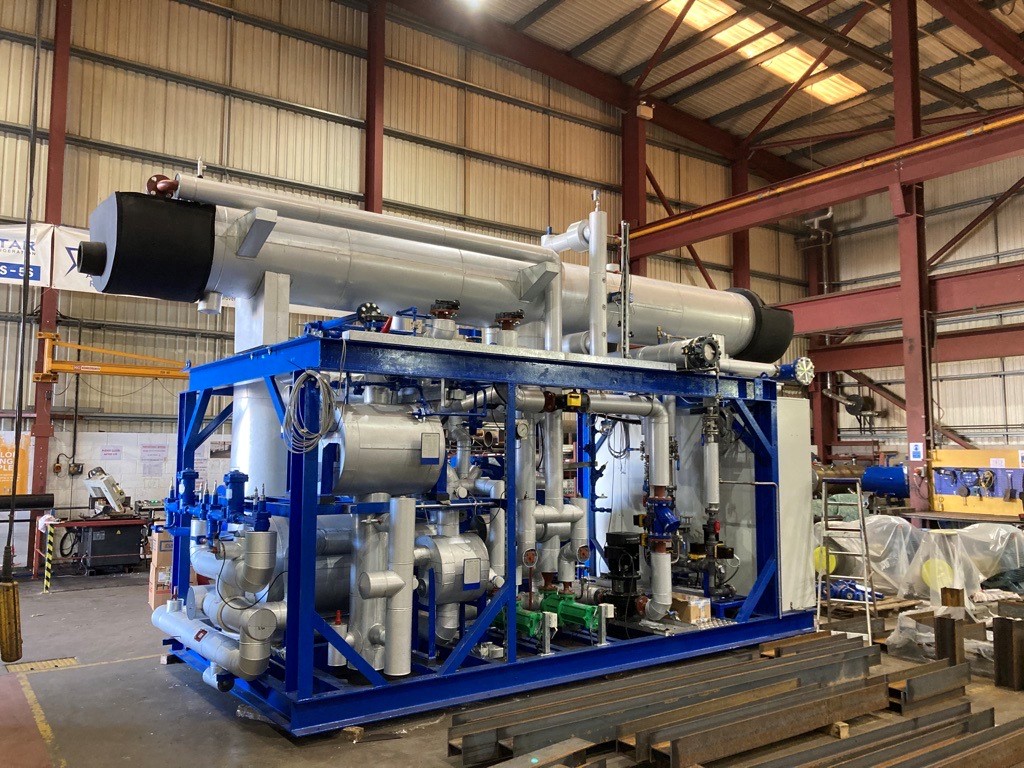Author
Rob Lamb
Group Sales & Marketing Director
rlamb@star-ref.co.uk
Sectors
Temperature Controlled Storage & Distribution
Rob Lamb
Group Sales & Marketing Director
rlamb@star-ref.co.uk
Temperature Controlled Storage & Distribution
The COVID-19 pandemic has highlighted the importance of industrial refrigeration in our modern society, delivering vital cooling for sectors including food production, temperature controlled storage, data processing and vaccine production. The projected growth of the world’s population to close to 11 billion by 2100, alongside the associated demand for food, data, medicines and other products, suggests an increased requirement for cooling and emphasises the need to improve efficiency and reduce cooling density.
Progress to date
The environmental impact of industrial refrigeration is a combination of direct and indirect emissions. Over the past thirty years, the damaging effect of synthetic refrigerants including CFCs, HCFCs and more recently HFOs through direct emissions has led to global phase-out and phase-down strategies that remain ongoing. There has been a focus on reducing refrigerant leakage, the development of new fluids with lower global warming potentials and increased use of ‘natural’ fluids including ammonia and carbon dioxide (CO2).
There have also been significant steps made in reducing indirect emissions through improved system efficiency. These have been achieved through a combination of product and system development, enhanced system control and the setting of efficiency standards. Product development includes improvements in compressor efficiency, enhancement in heat transfer performance and the use of energy reducing components such as electronic expansion valves. The use of variable speed drives for compressors, fans and pumps is now common place, delivering typical improvements in efficiency of 10% to 30% compared to fixed speed technology.
System development has included improvements to the transcritical CO2 cycle, including the use of parallel compressors and ejectors. Charge reduction has also been a focus, particularly through the development of low overfeed technology in ammonia systems and the cooling of secondary fluids via packaged chillers
Controls systems have evolved to focus on delivering optimum efficiency throughout the year. Modern PLCs are able to integrate the benefits of variable speed technology, floating suction and discharge pressures to match changes in the cooling demand and ambient conditions.
The setting of minimum efficiency standards for chillers and refrigeration systems through the Eco-Design regulations is helping to drive the industry towards lower energy solutions.
What remains uncertain is what more is needed if we are to meet a net zero commitment.
The Future
Benchmarking
So where do we need to focus in the next three decades to meet the 2050 net zero target? A key first step is understanding what it will mean to be net zero. Each sector will need to define targets and consider how these will be measured. Benchmarking is likely to play an important role and an existing example involves the data collected for the temperature controlled storage sector (Evans et al., 2013), which includes surveys of more than 300 stores with data from a further 500 facilities. Figure 1 shows how energy consumption varies with store volume for chill, frozen and mixed temperature facilities. Recent data collected from a number of UK facilities indicates that the energy consumption of the majority of the cold stores were below the European average for a given volume and many are close to or below previous ‘best practice’ guidelines set by the Energy Technical Support Unit in 1994 (ETSU, 1994).

It is recognised that more needs to be done to achieve net zero and a new best practice line proposed from data taken for a number of modern cold and chilled storage facilities (Pearson 2019) suggests a significant reduction in energy consumption of up to 30% of the accepted ETSU figures is possible through better building and refrigeration plant design. This step change in expectations is an example of what is needed as we move to net zero. Whether this new best practice benchmark will be enough needs to be investigated and it could well be that further improvements are necessary. It will be important to look at similar benchmarking for other sectors and this may be driven by legislation as the government in England and Wales work towards setting minimum energy performance standards for industrial buildings based on actual annual consumption.
Performance Analysis
Seasonal efficiency performance standards are already in place under the Ecodesign regulations and should continue as most industrial refrigeration systems work at part load capacity and in lower ambient temperatures for the majority of the year. It is important that this isn’t just a paper exercise at the point of selecting equipment, and the focus must be on monitoring performance and making any necessary adjustments to optimise efficiency over a system’s operational life. Cloud-based technology makes it possible to monitor performance data in real time, compare the findings with the theoretical design performance and identify where there are gaps. It is also possible to highlight what needs to be done to ‘plug the gap’ and address a shortfall in performance maintenance, repair or changes in control. By doing so, energy consumption can be optimised all year round. Using this type of data analysis also enables equipment performance and reliability to be monitored to ensure maximum longevity.
Heat Recovery
The majority of energy used during cooling processes is discarded to the environment through condensers or cooling towers. By capturing and boosting this waste heat, industrial refrigeration systems can play a positive role in decarbonising our future heating demands and avoid the need to burn gas. Implementation of heat recovery and heat pump systems similar to that in Figure 2 will enable waste energy to be captured and used for hot water heating and other heating processes. Applications generating water at +90⁰C are in operation today and development of higher temperature systems is ongoing. For sectors where there are large heating and cooling demands such as food production, energy recovered from refrigeration plants and boosted by electrically driven heat pumps can be used to heat water for CIP and other process requirements. For businesses with a large cooling demand but a small heating demand (e.g. temperature controlled warehouses, data centres) waste energy could be recycled into district heating networks for use by others and by doing so, reduce emissions elsewhere.

Conclusion
Positive steps have been taken to lower the environmental impact of industrial refrigeration by reducing direct and indirect emissions to the atmosphere but more will be needed as a growing population will increase demand. The focus will be on a combination of improved equipment, better analysis and enhanced recovery of waste heat to support the decarbonising of heating.
References
Evans, J.A., Huet, J-M., Reinholdt, L., Fikiin, K., Zilio, C. Houska, M. Landfeld, A. Bond, C. Scheurs, M. van Sambeeck, T.W.M., 2013. Cold Store Energy Performance, Proceedings of the 2nd IIR Conference on the Cold Chain and Sustainability, Paris, IIF/IIR, 310-317
ETSU, 1994, Energy Consumption Guide 37: Cold Storage Section. Energy Efficiency Office, Department for the Environment, Harwell, United Kingdom
Pearson, A., 2019, Energy Performance of Industrial Cold Storage Facilities, Proceeding of the 25th IIR International Congress of Refrigeration, Montreal, Canada
This article has been certified for Continuing Professional Development (CPD) by The CPD Certification Service. To get your CPD Certificate please email your request to CPDCertificate@star-ref.co.uk